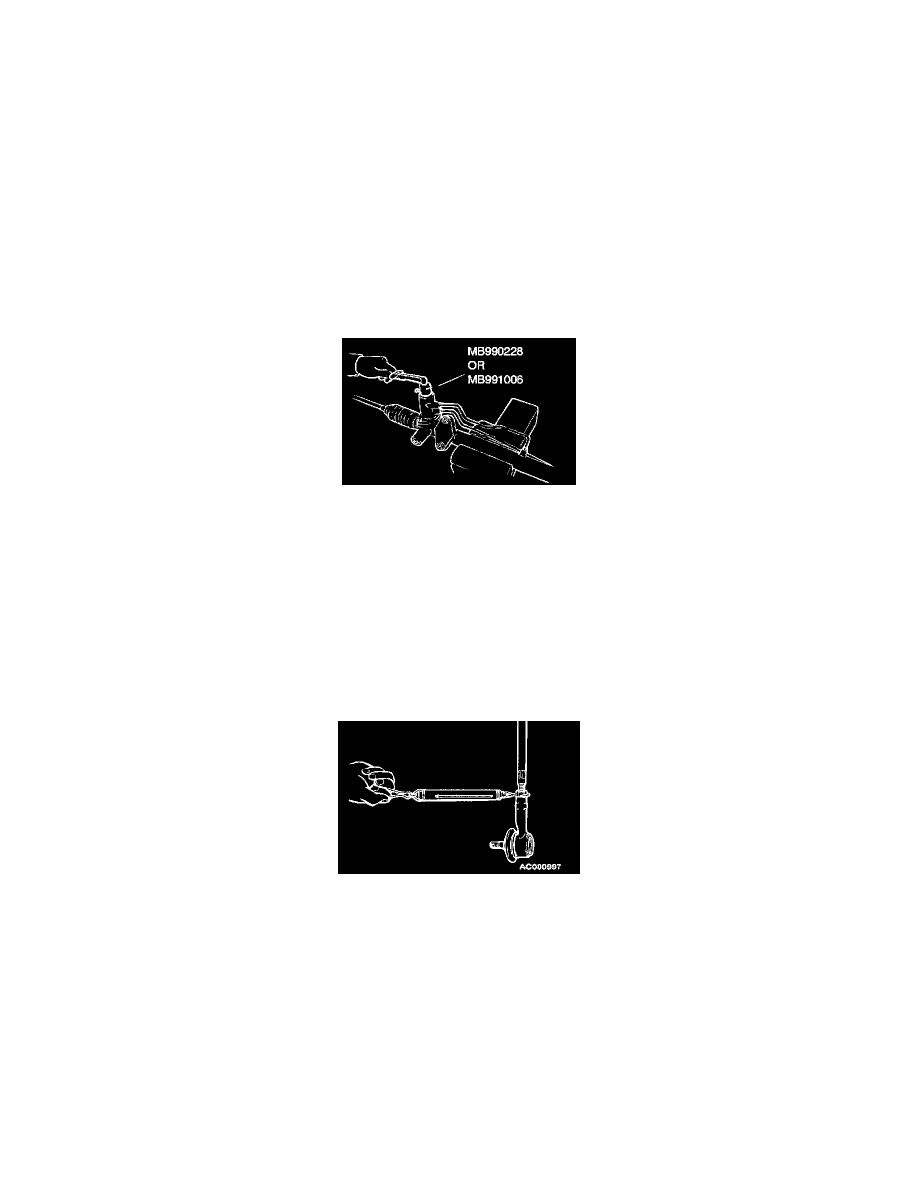Eclipse L4-2.4L SOHC (2004)

2. Turn the bolt and knob as necessary to make the jaws of special tool MB991897 parallel, tighten the bolt by hand and confirm that the jaws are
still parallel.
NOTE: When adjusting the jaws in parallel, make sure the knob is in the position shown in the figure.
3. Tighten the bolt with a wrench to disconnect the tie rod end.
<<B>> GEAR BOX ASSEMBLY REMOVAL
CAUTION: Be sure not to damage the bellows and the tie rod end dust cover when removing the gear box assembly.
INSPECTION
GEAR BOX TOTAL PINION TORQUE CHECK
CAUTION: When holding the steering gear box assembly in a vice, secure its mounting positions. If it is secured in any other place, the gear housing
may become deformed or damaged.
Using special tool MB990228 or MB991006, rotate the pinion gear at the rate of one rotation in approximately 4 to 6 seconds to check the total
pinion torque.
Standard value: 0.8 - 1.9 Nm (6.9 - 16.5 inch lbs.)
[Change in torque: 0.7 Nm (6.1 inch lbs.) or least
NOTE: When measuring, remove the bellows from the rack housing. Measure the pinion torque through the whole stroke of the rack.
If the measured value is not within the standard range, first adjust the rack support cover, and then check the total pinion torque again.
If the total pinion torque cannot be adjusted to within the standard range by adjusting the rack support cover, check the rack support cover, rack
support spring, rack support and replace any parts if necessary.
TIE ROD SWING RESISTANCE CHECK
1. Give 10 hard swings to the tie rod.
2. Measure the tie rod swing resistance with a spring scale.
Standard value: 4.0 - 18.6 N (17.8 - 82.7 lbs.) [1.0 - 4.9 Nm (8.7 - 43.4 inch lbs.)]
3. If the measured value exceeds the standard value, replace tie rod.
4. If the measured value is below the standard value, the tie rod can be re-used if it swings smoothly without excessive play.
TIE ROD END BALL JOINT DUST COVER CHECK
1. Check the dust cover for cracks or damage by pushing it with your finger.
2. If the dust cover is cracked or damaged, replace the tie rod end.
NOTE: Cracks or damage of the dust cover may damage the ball joint. If it is damaged during service work, rep/ace the dust cover.
